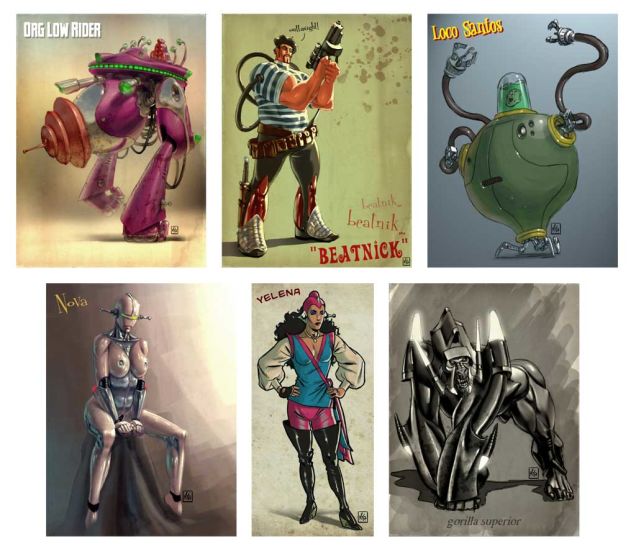
What's the thing you remember most from that game? That's the question I always ask myself when I put down the controller and turn off my TV to do something else. Is it the audiovisual presentation? The gameplay? The game world? The amount of fun I had playing that game? To be honest, it's hard for me to answer such a critical question since a) there are so many components to a game that nailing down a particular aspect is hard and b) I'm not the kind of person that plays video games in long bursts, which is troublesome considering I usually have a lot of free time on my hands. I need to find a good reason to go back for another round, or else playing will feel like an absolute chore. So when all else fails, what's the answer I usually have in mind? Characters.
It sounds weird, and for good reason: gameplay is what matters most in video games, and not every game contains concrete and original characters. But the thing is, I don't play every video game on the market: I'm someone who favors single-player games, FPSs, and RPGs, the types of game that always include characters. Games like TimeSplitters, Valkyria Chronicles, Darksiders II, and Dishonored. In my eyes, characters are responsible for drawing me into the experience.
But the more games I play, the weaker that reason for playing games becomes. When I'm exposed to more archetypes than you can shake a stick at, I start to lose interest in the experience and video games as well, which sounds stupid since a game is more than a collection of characters and the average gamer wouldn't care about such idiosyncrasies. But I'm not your average gamer: I'm someone who likes games with memorable characters, characters that I think of and admire even when I'm not playing the games they're in. And I'm sure I'm not the only gamer on Earth who enjoys having interesting characters in their games, even if they don't necessarily make up the bulk of the experience. But if we want to heighten gaming's status as an art form, we have to go beyond the status quo (e.g. dudebros) and look outside the box when it comes to good character design.
Before I delve into the inner workings of good (and bad) character design, I have to properly explain what constitutes a video game character so that every reader understands what I'm talking about. We all know, by basic definition, that a game character is a character that exists in a game. Pretty obvious. But it's much more than that. Game characters essentially serve as one of the components that draw us into the experience, "immersive agents" as I'd like to call them.
Immersive agents can be many things: they can be the game world, the gameplay, or even the plot. They are responsible for keeping us invested into the experience and create the feeling that we're playing more than just a game. This is important because if the experience feels only like a game, then we're not likely to play the game in the long term. Annoying, unlikable, and boring characters aren't enough to completely destroy the experience (unless the game is heavily story-driven), but they can certainly keep us from loving the game. Dead Island is a good example of a game that I personally like, but whose characters are so bad I can't help but switch off my console from time to time and try to focus on the otherwise solid gameplay.
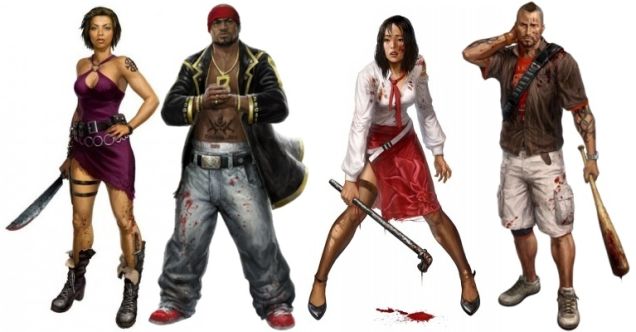
Video games are a form of visual art, meaning that they can be judged by how they look and how they represent the animate and inanimate objects in the game world. This explains why physical characteristics matter a lot when crafting characters for your game. Take physique, for instance. Most of the time, physique can convey a character's traits: is he thin and frail? Must be a weak character. Brawny and tall? Likely to be a brute. That's not always the right assumption, but it is the first one we usually make when we meet a character for the first time, and before he opens his mouth. This is critical when designing the protagonist as he is the character you'll be controlling in the game and taking a look at what he looks like will give you a good idea of what he is capable of. It's also important when designing enemies and bosses. Nothing is more frustrating than meeting a frail goblin in an RPG only to realize he takes away three-quarters of your health with one hit (and no, displaying his level on his head does not excuse his misleading appearance).
Another important aspect of physical character design is the silhouette. Silhouettes are important for several reasons: they help distinguish characters from each other and against the environment, allowing the designer to essentially test the character's level of distinction. Distinction is important when it comes to crafting memorable characters, both mentally and physically. Take, for example, the cast of the recently-announced Overwatch. All of the characters on offer are unique in their own way, but their silhouettes give you a clear idea of their personalities as well as their gameplay characteristics. Big and bulky characters such as Winston look like the type of character that can withstand lots of damage, whereas slim and winged classes like Tracer and Pharah give you the impression that these characters are quite nimble and mobile...and that's before you even got a chance to try them out yourself! Point is, silhouettes can really help you determine whether or not your characters are distinctive enough.
Then, there is the pose. Poses might seem trivial at first. I mean, they are pretty static in nature compared to actual movement. But again, a good character is one you usually get a good idea of just by looking at him. A character flexing his biceps and smiling, for instance, means we're dealing with a pretty confident person, whereas a character dual-wielding revolvers flauntingly gives us the impression that he's going to shoot first and ask questions later. The TimeSplitters series is an excellent reference for character poses. When browsing through the multiplayer roster, you always see the characters adopt a particular pose before being selected by the player. Those poses give you a decent idea of what to expect from that character. When selected, an animation of the character will be played while he's delivering basic (and sometimes punchy) one-liners. While their poses don't actually factor into the actual gameplay, the fact they exhibited their personalities through their poses and animations makes us want to play as these particular characters. It's a clever trick that the developers used to get us attached to these wacky characters, and that's before mentioning their unique appearances.
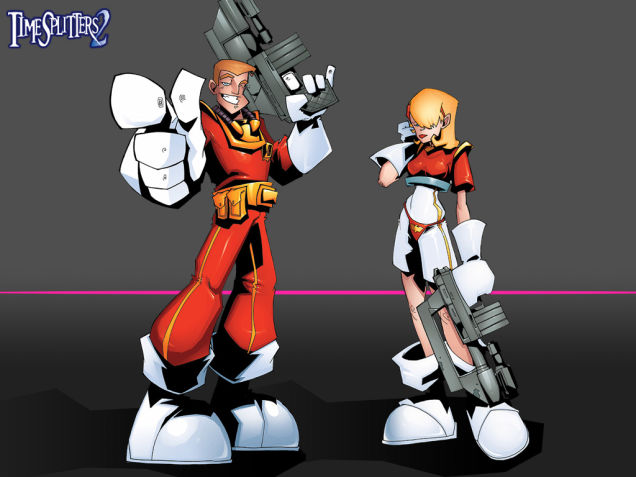
We know whether or not the character looks the part, but how does he act the part? That's where things such as dialog, voice, and actions come into play. Dialog is responsible for shaping most of a character's personality. It determines whether or not the character is humorous, heroic, villainous, or serious in nature. Humorous characters crack jokes, serious characters are very blunt about the situation they're in, villainous characters utter sinister quotes, and heroic characters try to instill confidence with lionhearted quotes. It's better if characters stick to one particular category when it comes to personality as being out-of-character can really kill immersion and make the character too inconsistent/unlikable to care for him.
Voice is also an important factor. Try uttering sinister/heroic quotes with a voice that sounds like you inhaled helium. People will not take you seriously and will instead laugh at what you said. It COULD work if your game is comical in nature, but not every game strives for humor. When working on a game that takes itself seriously or tries hard to make you care for its characters, you have to make sure that their voices match their personality and appearances. Voices define characters and elevate them to stardom if performed properly. Garrett from the Thief series is well-known for his snarky remarks, and cynical characters are usually hard to get attached to. But Stephen Russell's great performance helps us empathize with the Master Thief and makes him a bit of a medieval Han Solo. Speaking of performance, tone also plays a key role in making characters likable. A great voice actor can be wasted if he does not put any effort in conveying the character's feelings. Ghost in Destiny, for instance, is a character I find soporific due to his dry delivery, and no amounts of Peter Dinklage is going to save him from blandness. Properly conveying the character's feelings at key points in the game's storyline can humanize him, but like everything in life, tone should be properly managed. No one wants to listen to or empathize with a character who is constantly screaming at your face while in-game (virtually every military game in existence). Melodrama and dryness are out of the question when choosing and managing voices for characters.
Finally, there are actions. Actions speak louder than words, and the character has to do things that are in line with his overall personality. A tough guy character, for example, would rather bash a door open than open it normally, whereas a wimpy character would run and jump awkwardly. There are limits, however, to character actions if you want your characters to be relatable: heroic characters shouldn't be perfect at everything they do, funny characters shouldn't constantly crack jokes, and tough guy characters should rarely shout. A good character is one that doesn't look solely to his personality when performing actions. It's like eating fast food all the time: it's delicious and enjoyable to eat at first, but you quickly tire of it and wish you ate something else just to break the monotony. If your game is story-driven, then you simply CANNOT afford to make that mistake.
So that's what defines a character. Now comes the tricky part: what should you do to ensure that your character is likable and relatable? What shouldn't you do when designing characters? I mentioned a few do's and don'ts while taking a look at the anatomy of a game character, but I think it would be useful to summarize them in a few short sentences:
MAKE YOUR CHARACTER DISTINCTIVE:
it doesn't matter if your character is objectively likable or interesting. If he can't stand out from the pack, then he is bound to get lost in the masses. Good characters always have that unique trait that helps define their personality or appearance. You could have a robotic character in your largely humanoid RPG roster (HK-47 comes to mind), or you could include someone who is trigger-happy and doesn't take anything seriously (Haggard from Bad Company is a good example). What you end up with is a character that's memorable simply because he is unlike any of the other characters that populate the game world. Distinctiveness can make a character interesting.
IMPLEMENT CHARACTERISTICS SEAMLESSLY AND HARMONIOUSLY:
A character is more than the sum of its parts. It's the interaction/chemistry between a character's different traits that really sell his personality/appearance and make him a likable/interesting character. There are different ways to accomplish this: you could craft a character with various but similar traits and accentuating one of said traits to make the character interesting and relatable (Sam Fisher from the Splinter Cell series has a gruff appearance, but cynical personality that makes him intimidating and humorous at the same time). Or you could aim for contrast and craft a character whose personality juxtaposes with his appearance (The Tower from Shadow of Mordor is a surprisingly calm and articulate character despite his frightening appearance). The latter approach is riskier since you could end up with a character whose traits don't gel very well, but the results can be intriguing if done properly.
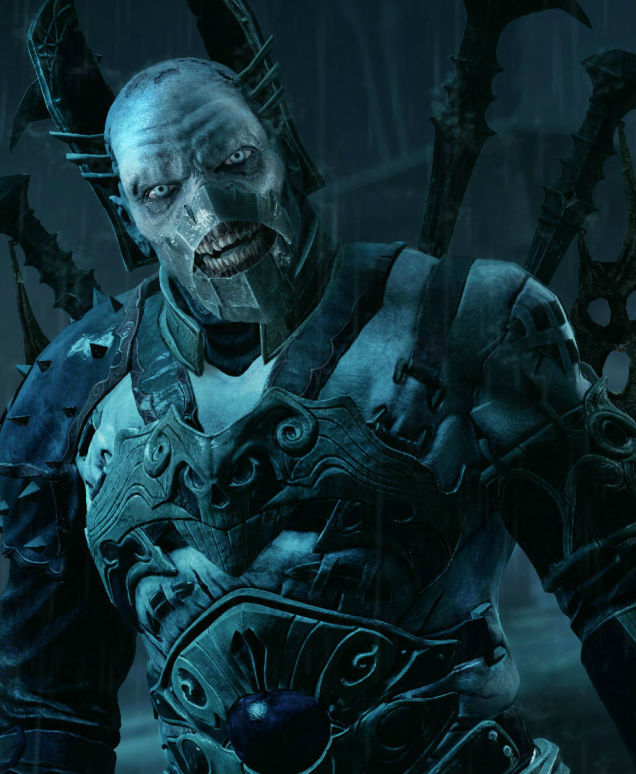
DON'T USE STEREOTYPING:
What's worse than an uninspired character? An uninspired character that's actually a walking stereotype. Stereotypes are the bane of good character design: they strip the character of any individuality and turn him into an absolute bore to listen to and/or look at. It's not only cheap, but it's also grossly offensive in some cases. Dead Island is a perfect example of a fun game that's marred by its characters. From the butchered accents to the shallow personalities, the characters in Dead Island have no redeeming quality whatsoever. And the one-liners they utter while slaying the undead made me want to mute the game altogether. And I rarely mute the games I'm playing. There's a reason why people hate stereotypes: they reduce individuals to a set of preconceived traits that are sometimes exaggerated for comedic effect. "Stock characters" can really take you out of the experience and destroy any semblance of immersion.
DON'T USE TOKENISM:
Another problem that's plaguing our medium is tokenism. Tokenism is when you do the bare minimum to include a minority character (black, gay, Latino, female, etc...) in your game and call it a day without even considering what purpose that character serves other than populating the game world. This can actually be worse than NOT including those characters in the first place because it gives players the assumption that that's all there is to minorities. In fact, here's a rule of thumb when designing minority characters: if you remember a minority character simply because of their minority traits, then you know you made a mistake somewhere down the line. Oh, you included a black guy in your band of white dudebros ("cough" Gears of War "cough")? Good! For what purpose? If your answer is "diversity" and nothing else, then you just made yourself look like a fool. Give them some depth, some meaning, and some character. Don't do it so you can appear politically correct, or pander to a certain demographic. I really hope the upcoming Overwatch doesn't fall prey to this problem.
So what does the future hold for game character design? Well, like many other mediums, video gaming is going through a phase, one that will potentially open the door to more opportunities and considerations when creating game characters. Remember when movies only featured white people and very few, if any, minorities (and the ones that are included are sometimes offensively stereotypical)? Well, that has changed over the past 50 years. Now movies include characters that are portrayed by actors from different backgrounds. Gaming was born roughly 50 years ago, so it's only a matter of time before we see characters that aren't only gruff or white. We want characters with myriad personalities and appearances in our games, not just one-liners-spewing dudebros with little to no character development. So what can we do to make sure that we see a more diverse cast of characters?
BE CREATIVE AND OPEN TO NEW IDEAS:
Gaming is a form of art, and art allows people with different interests and ideas to express themselves with little to no restrictions. Don't be afraid to come up with characters that people have never seen before. Are you thinking of crafting a fez-wearing snowman with hooks for hands and robotic legs? Do it. Or maybe you want to create a security droid with a TV for a head? Go for it. Of course, you have to find a way to fit your characters into your game world, but whatever you do, don't let the norm fool you: gamers aren't only interested in dudebros. They just don't want to admit it. Remember, it's YOUR game. Do what you want with it, and don't be afraid to surprise your audience with your original creation. Maybe your original creation will become the norm! Look at the cast of TF2, for instance: games likes Overwatch clearly took their inspiration from Valve's F2P masterpiece when it comes to character design, and TF2 features a wide roster of oddball characters that were never seen in gaming, let alone FPSs.
VARY YOUR CHARACTERS FOR THE SAKE OF YOUR GAME, NOT OF DIVERSITY:
I know I mentioned diversity a lot, but you have to remember that your characters need to carry a purpose in the game world. If you diversify your characters simply because you thought it would please the audience, then you're doing it wrong. Design and vary your characters according to the game world, not according to what the market is currently lacking. TimeSplitters is a good example of a game that diversifies its characters according to the game world: it's a time-traveling sci-fi FPS, so expect various timelines, locales...and a wide cast of different characters. Undead priests, gingerbread men, ninja monkeys, you name it. Of course, not every game can be wacky or surreal. If your game is realistic in nature, then you'll have to work harder to craft diverse and likable characters. Perhaps different clothing styles and personalities will do the trick. Who knows? But be sure your diverse characters have purpose and meaning. Don't include them just because you want your roster to have more flair.
So what defines a game character? Is it his appearance, his personality, or a combination of both? To be honest, that's not a question you can easily answer. You could say that it's the chemistry between the character's different traits, but that's only if he has a body AND a personality. It depends on who you're referring to. If you're talking about Sackboy from LittleBigPlanet, then you could say it's his appearance that matters most. He doesn't really have a concrete personality. That's up to the player to decide. But we all know that he's an adorable little fella. But if we're talking about the narrator from The Stanley Parable, then it's his personality that defines him, not his appearance since we never see him in-game. His witty remarks and posh voice is what helps us empathize with him as we guide the titular character through the environment. Characters like Solid Snake and Nathan Drake are judged by both their personality and their appearance. One is a gruff soldier with a cool bandana and a complex past, the other is a wise-cracking adventurer who cares about his companions, isn't afraid to get dirty and is quite good-looking (Gosh, that was a weird sentence to write).
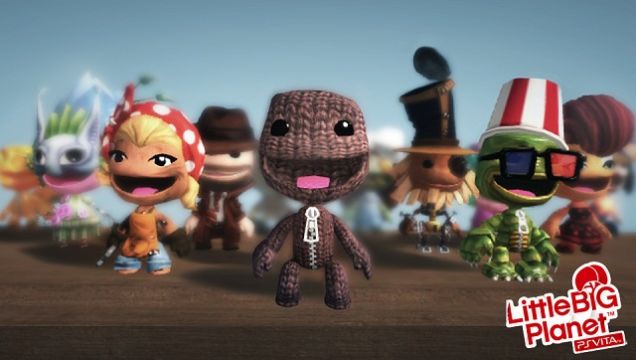
In conclusion, creating game characters isn't about following a strict set of guidelines and ensuring that the right boxes are being ticked when adding traits to your character. It's just about knowing what kind of character your game really needs. If you're creating an OTT FPS like Serious Sam or Duke Nukem, then you should let your imagination do the work for you. But if you're creating an emotional experience like The Last of Us, then you have to make sure your characters have interesting and realistic personalities. Remember, the key to crafting good characters is to make sure they have a place in the game world. If people started to craft games that are not just modern-day shooters or fantastical JRPGs, then characters can potentially become more diverse and interesting. My advice to all game designers: don't get stuck in a rut.
Log in to comment